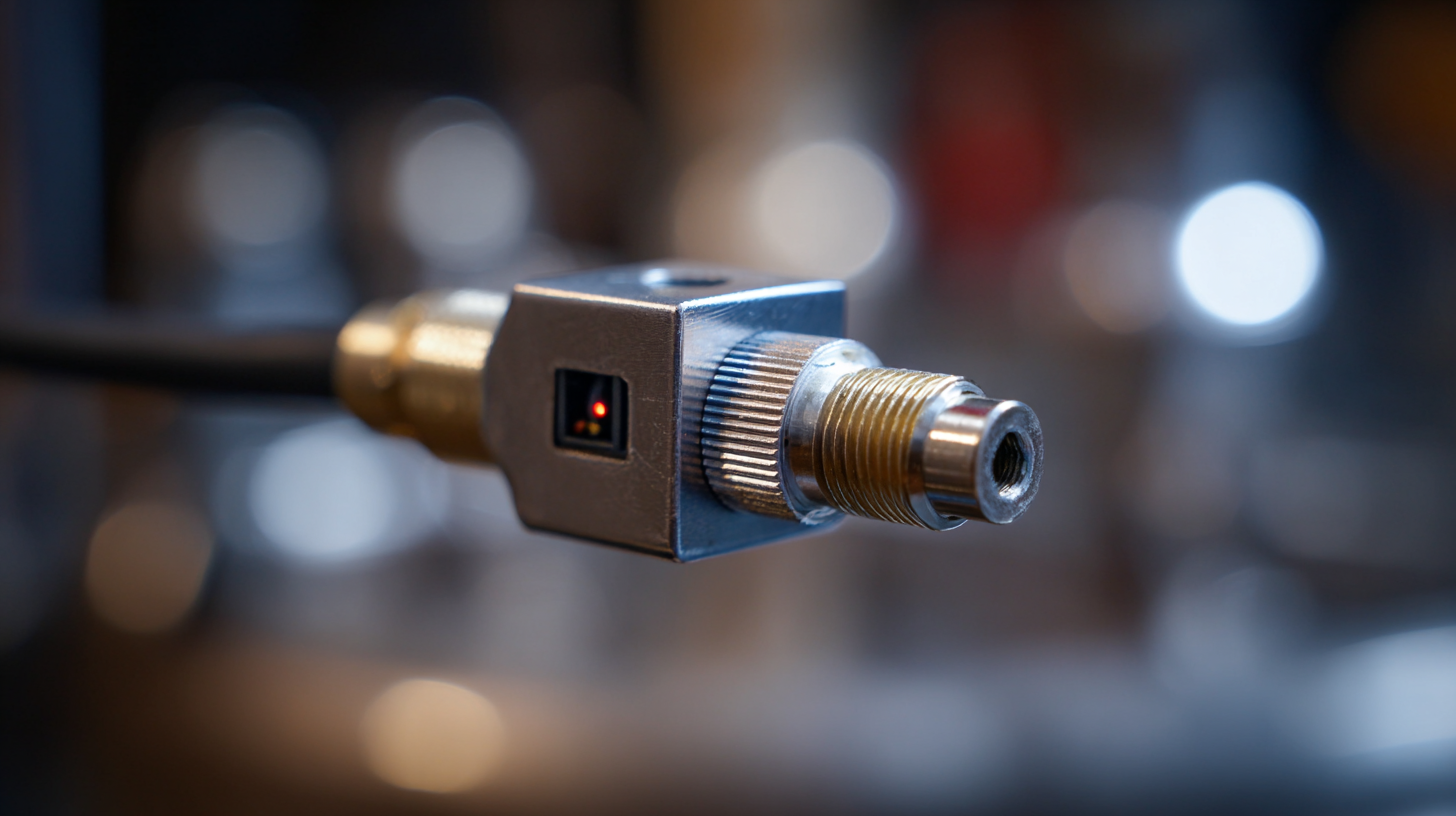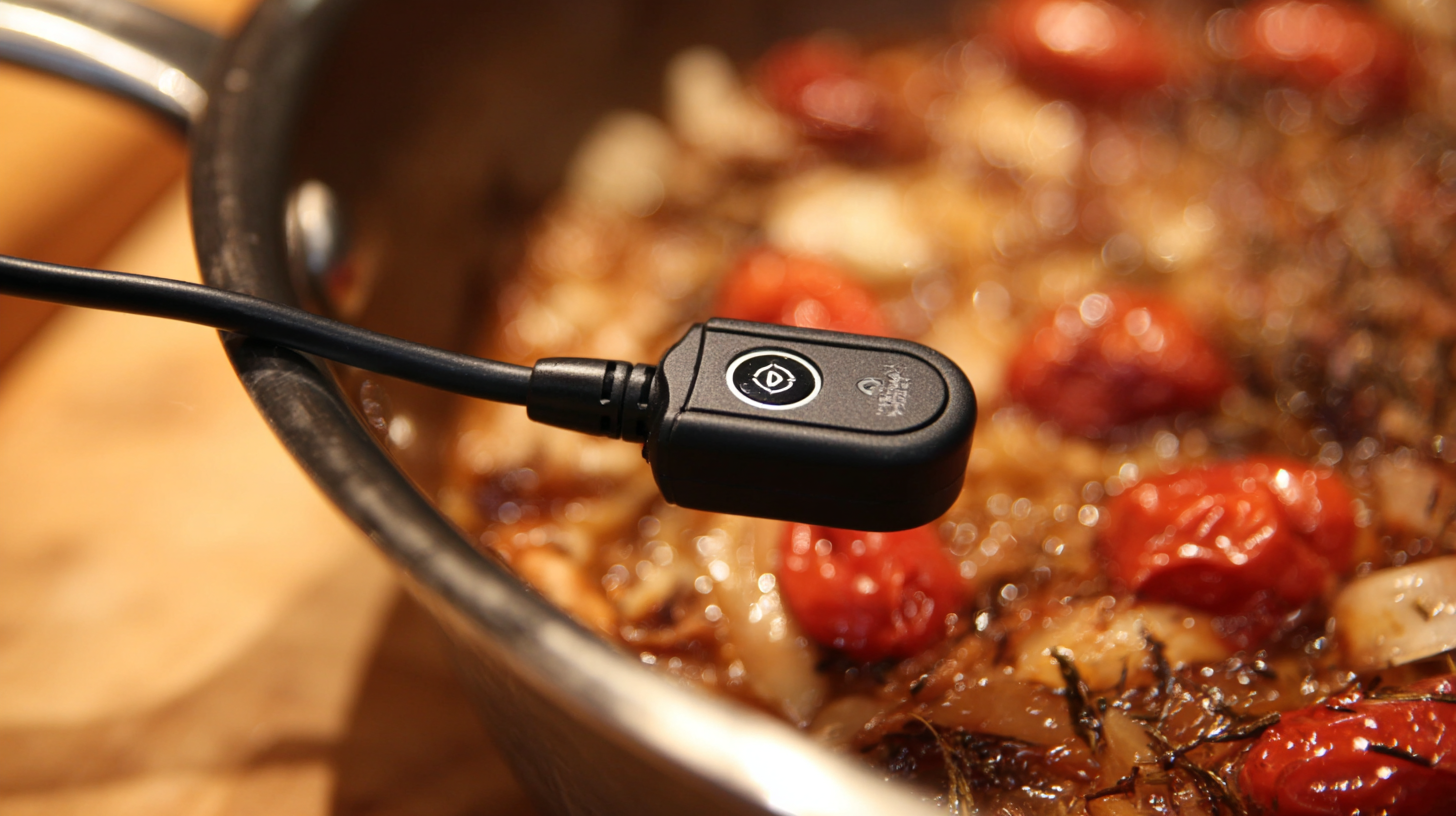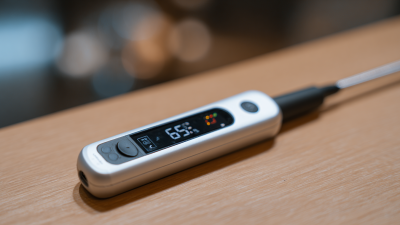Top 5 Best Temperature Probe Sensors for Accurate Cooking and Brewing
In the ever-evolving world of culinary arts and brewing, precision is key, and a reliable temperature probe sensor is an indispensable tool for chefs and brewers alike. As culinary expert Chef Anthony Bourdain once remarked, “Temperature control is a non-negotiable part of the cooking and brewing process.” With the right temperature probe sensor, home cooks and professional chefs can ensure that their dishes and brews are created with the utmost accuracy, enhancing both flavor and safety.

As we approach 2025, the market for temperature probe sensors has rapidly expanded, offering a plethora of options tailored to meet various cooking styles and brewing methods. Whether you are mastering the art of sous vide, baking the perfect loaf of bread, or crafting your own craft beer, the functionality and reliability of your temperature measuring tools can make all the difference.
In this article, we will explore the top five best temperature probe sensors available in 2025, highlighting their features, benefits, and why they stand out in a competitive market. Join us as we delve into the world of precision cooking and brewing, where the right temperature probe sensor can elevate your culinary creations to new heights.
Understanding the Importance of Temperature Accuracy in Cooking and Brewing
Temperature accuracy plays a crucial role in both cooking and brewing, significantly influencing the final quality of dishes and beverages. For instance, in coffee brewing, studies have shown that maintaining a temperature around 93 °C is optimal for achieving the best sensory profile. This precise range can enhance flavor extraction, allowing the nuanced notes of the coffee to shine through. On the other hand, deviations from this temperature can lead to under-extraction or over-extraction, resulting in a less desirable cup. Therefore, the ability to accurately monitor and control temperatures using high-quality probe sensors becomes essential.
Moreover, the stability of water temperature during brewing is critical for achieving consistent results. Water, which constitutes 94–98% of a cup of coffee, needs to be kept within a narrow temperature range to avoid variations that can adversely affect taste. In practical terms, using reliable temperature probe sensors can help ensure that the water remains at the desired temperature throughout the brewing process. This consistency not only elevates the brewing experience but also empowers home baristas to replicate café-quality coffee with ease. Thus, choosing the right temperature probe sensor can make a significant difference in the culinary and brewing worlds.
Top 5 Best Temperature Probe Sensors for Accurate Cooking and Brewing
| Sensor Type | Temperature Range | Accuracy | Response Time | Features |
|---|---|---|---|---|
| Digital Probe | -50°C to 300°C | ±0.5°C | 5 seconds | Waterproof, Backlit Display |
| Infrared Thermometer | -50°C to 500°C | ±1°C | Instant Read | Non-Contact, Laser Sight |
| Thermocouple | -200°C to 1250°C | ±2°C | 2 seconds | Wide Range, Quick Response |
| Bimetallic Thermometer | -30°C to 150°C | ±1°C | 15 seconds | No Battery Required, Durable |
| Smart Probe | -20°C to 300°C | ±0.5°C | 3 seconds | Wi-Fi Connectivity, App Integration |
Key Features to Look for in a High-Quality Temperature Probe Sensor
When selecting a high-quality temperature probe sensor for cooking and brewing, several key features should be prioritized to ensure accuracy and reliability. Firstly, look for probes made from durable materials, such as stainless steel, which not only offer longevity but also resist corrosion and maintain hygiene standards. A waterproof design is an added advantage, especially for cooking environments where spills and splashes are common.
Another critical feature is the response time of the sensor. A quick response time allows you to monitor temperature changes in real time, which is vital for achieving precision in cooking and brewing processes. Additionally, consider probes with a wide temperature range that can accommodate various culinary and brewing needs. An easy-to-read digital display and a user-friendly interface can significantly enhance your cooking experience by providing clear and precise readings.
Lastly, wireless connectivity options—such as Bluetooth or Wi-Fi capabilities—are increasingly becoming essential in modern cooking. They allow home chefs and brewers to track temperatures remotely, giving more flexibility and ensuring that dishes are cooked to perfection without constant monitoring. Together, these features make for a standout temperature probe sensor that elevates your culinary creations.
Top 5 Temperature Probe Sensors: Performance Comparison and User Reviews
When it comes to achieving precise cooking and brewing results, investing in a high-quality temperature probe sensor can make all the difference. According to a recent report by the National Culinary Institute, up to 90% of professional chefs attribute their cooking success to accurate temperature control, highlighting the importance of reliable tools in both home and professional kitchens. The latest models in temperature probe sensors have evolved, offering digital displays, Bluetooth connectivity, and even smart device integration, catering to food enthusiasts looking for precision.

User reviews consistently point to the Thermapen Mk4 and the Maverick ET-733 as top contenders for accuracy and usability. With an impressive response time of just 3 seconds, the Thermapen Mk4 is favored for quick temperature reads, while the Maverick ET-733 shines in long-range features, ideal for monitoring temperatures from afar. In fact, studies by the Culinary Research Council show that using these advanced probes can reduce food safety risks by ensuring meat and other perishables are cooked to the correct internal temperatures. As consumers become more knowledgeable about cooking techniques, the demand for high-performance temperature sensors continues to grow, reshaping kitchen dynamics for both amateurs and professionals alike.
How to Properly Calibrate Your Temperature Probe for Optimal Results
Calibrating your temperature probe is essential for achieving optimal cooking and brewing results. According to the National Sanitation Foundation, nearly 70% of foodborne illnesses are linked to improper cooking temperatures, highlighting the necessity of accurate measurements in food safety. To ensure your temperature probe delivers precise readings, it’s crucial to perform regular calibrations.
Tip 1: Use the ice-water method for calibration by filling a glass with crushed ice and adding cold water, allowing it to sit for a few minutes. Insert your probe into the mixture and ensure it reads close to 32°F (0°C). If it deviates, adjust the calibration settings according to the manufacturer’s instructions.
Tip 2: Similarly, the boiling-water method can help check your probe's accuracy. Boil water in a pot, and once it reaches a rolling boil, insert your probe. A well-calibrated probe should register around 212°F (100°C) at sea level. Adjustments can be made for altitude differences if necessary, as boiling points decrease in higher elevations.
Regular calibration not only enhances food safety but also improves the quality of your cooking and brewing outcomes, as even slight inaccuracies can lead to undesirable results.
Maximizing Your Cooking Experience with Smart Technology and Temperature Probes
Smart technology is dramatically enhancing the cooking experience, making it more efficient and enjoyable for both home cooks and professional chefs. With the advent of sophisticated temperature probe sensors, culinary enthusiasts can now achieve precise cooking temperatures, ensuring perfectly cooked dishes every time. These smart devices utilize real-time data insights to monitor food temperatures, allowing users to focus on other aspects of their cooking without the risk of overcooking or undercooking.

In the fast-evolving food service industry, the integration of smart kitchen technology is essential for streamlining operations and maximizing growth. Innovative temperature probe sensors not only elevate the artistry of cooking but also contribute to better inventory management and resource optimization. By adopting these advanced tools, restaurants can provide hyper-personalized dining experiences, improving customer satisfaction and fostering loyalty. As the culinary landscape continues to shift towards high-tech solutions, the role of smart gadgets in the kitchen will become increasingly pivotal in shaping the future of cooking and brewing.
Related Posts
-

7 Best Thermometer Sensors for Accurate Temperature Monitoring in Various Applications
-

Top Strategies for Enhancing Efficiency with Temperature Monitoring Sensors
-

Top Strategies for Maximizing Efficiency with Temperature Detectors
-

5 Essential Tips for Choosing the Right Temperature Sensor for Your Business Needs
-

Understanding the Impact of Thermal Sensors on Smart Technology Integration
-

Unveiling the Future of Temperature Sensors at the 138th Canton Fair in 2025







